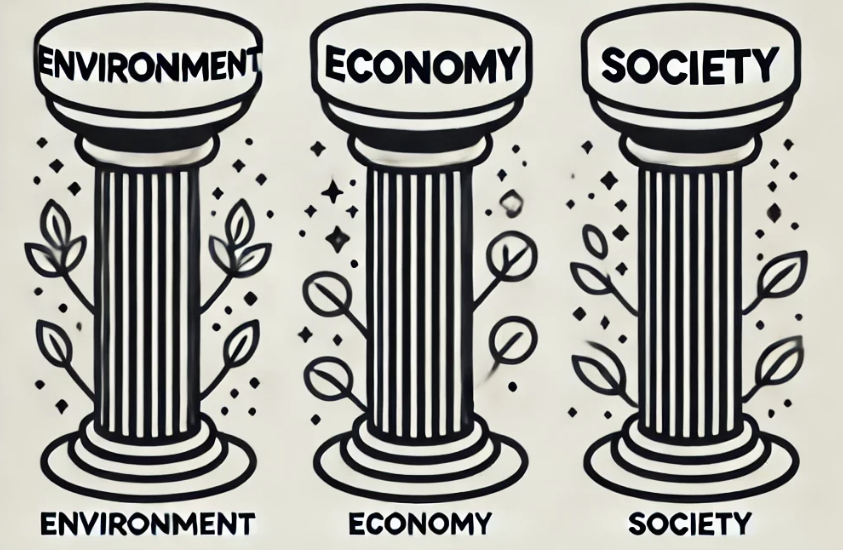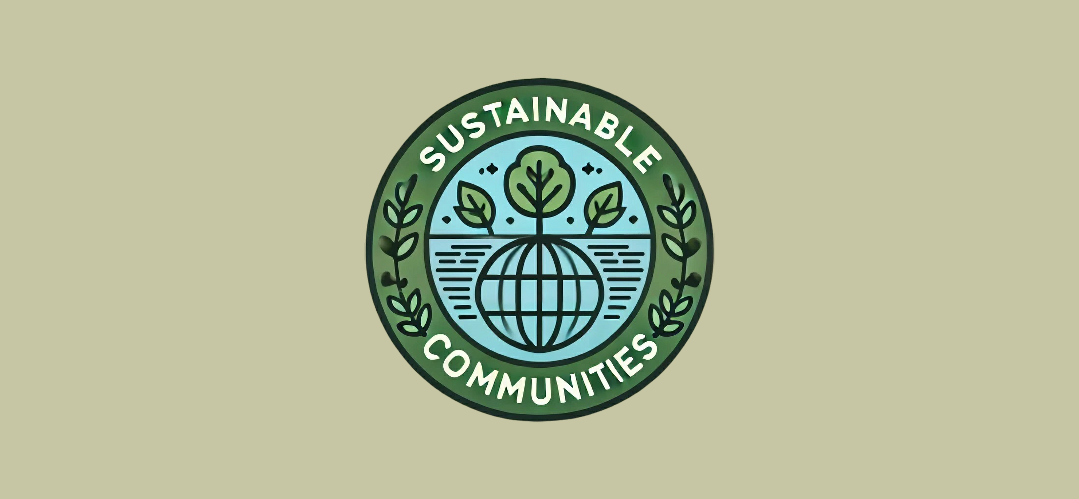By Kristi Sturtz, ALM, AICP
Sustainable Development is an aspirational term used to describe a high standard of development within communities. Left undefined, this term can mean different things to different people. The Sustainable Communities Blog has been created to break down what Sustainable Development means for anyone interested in learning more. This first blog provides a background of how the term has been defined. Other posts will cover a spectrum of topics that make up various aspects to be considered when developing Sustainable Communities. I am excited to get going on this new adventure. Let’s get started!
What is Sustainable Development?
Sustainable development is a multi-faceted approach that seeks to improve the quality of life for individuals and communities in a way that can be maintained over the long term without depleting resources or harming natural systems. It involves balancing environmental stewardship, economic growth, and social equity to create thriving, resilient communities.
Historical Background on Sustainability
The concept of sustainability has evolved over time, with its roots tracing back to ancient civilizations that understood the importance of living in harmony with nature. However, the modern understanding of sustainable development emerged prominently in the late 20th century.
In 1987, the Brundtland Report1, officially known as “Our Common Future,” was published by the World Commission on Environment and Development. This seminal document provided one of the most widely accepted definitions of sustainable development. Specifically, sustainable development “meets the needs of the present without compromising the ability of future generations to meet their own needs”. This definition underscores the need for intergenerational equity, emphasizing that the actions we take today should not impede the opportunities of future generations.
In 1992, the definition was further refined at the United Nations Conference on Environment and Development in Rio de Janeiro by highlighting the interconnected nature of sustainable development.2 The conference presented pillars of the economy, society, and environment as interdependent and mutually reinforcing aspects of sustainable development. This perspective stresses that true sustainability cannot be achieved by focusing on a single dimension in isolation. Instead, it requires an integrated approach that considers the complex interplay between economic, social, and environmental factors.

Some examples of the breadth sustainability factors include the following:
Environmental Sustainability
Natural Resource Conservation
Ecosystem and Biodiversity Protection
Waste and Pollution Minimization
Economic Sustainability
Entrepreneurial, Employment and Wealth-building Opportunities
Circular Supply Chains
Technological Innovations
Social Sustainability
Health, Safety and Well-being
Resilience
Equity, Inclusion and Justice
Approaches to Sustainable Development
Sustainable development is a holistic concept that recognizes the interdependencies among various aspects of society. Environmental degradation can undermine economic opportunities and social well-being. Conversely, economic instability can lead to social strife and unsustainable environmental practices.
By adopting sustainable community development principles, communities can work towards a balanced approach that promotes long-term resilience and well-being. This involves collaborative efforts among governments, businesses, and civil society to create policies and practices that reflect the interconnected nature of sustainability.
In my work as a Sustainable Community Development Consultant, I have found culture to be a critical driver of long-term outcomes. Shared values, beliefs and behaviors can positively and negatively influence the willingness and ability of communities to change. As management consultant, Peter Drucker, has famously expressed “Culture Eats Strategy for Breakfast”. 3
Moving Forward
As the world faces increasing environmental challenges, social inequalities, and economic uncertainties, the principles of sustainable development offer a roadmap for creating more sustainable communities. By embracing the holistic, long-term, interconnected nature of sustainability within the context of community cultures, we can work toward a future where both people and the planet can thrive.
Read Sustainability Explained – Part 2
- UN Secretary General World Commission on Environment and Development. (1987). Report of the World Commission on Environment and Development : Our Common Future. https://digitallibrary.un.org/record/139811?ln=en ↩︎
- Report of the United Nations Conference on Environment and Development, Rio de Janeiro, 3-14 June 1992.
https://www.un.org/en/conferences/environment/johannesburg2002 ↩︎ - The Management Center (no date) Culture eats strategy for breakfast: Transforming results by changing beliefs and behaviors.
https://www.managementcentre.co.uk/managementconsultancy/culture-eats-strategy-for-breakfast/ ↩︎


